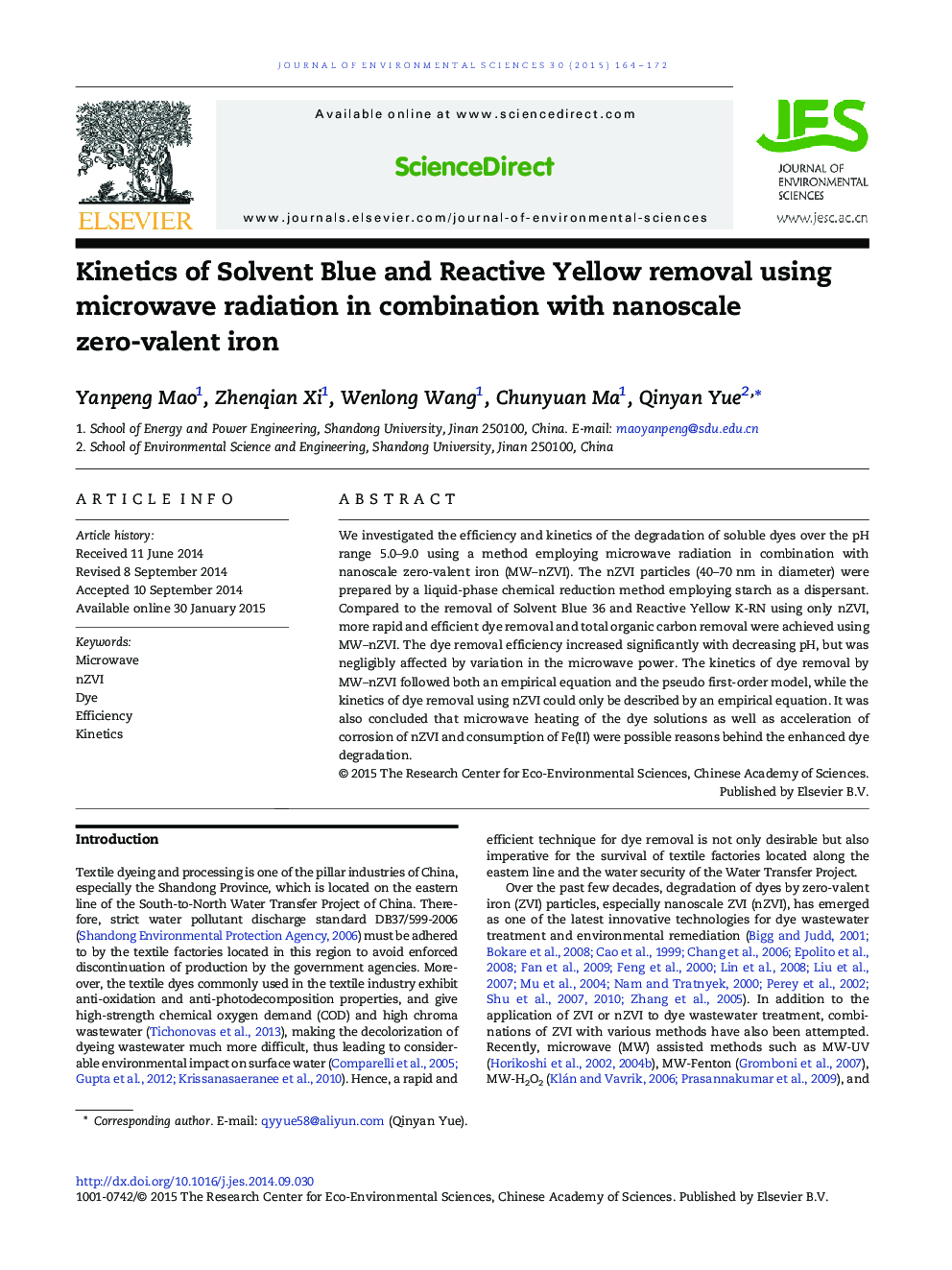| Article ID | Journal | Published Year | Pages | File Type |
|---|---|---|---|---|
| 4454116 | Journal of Environmental Sciences | 2015 | 9 Pages |
We investigated the efficiency and kinetics of the degradation of soluble dyes over the pH range 5.0–9.0 using a method employing microwave radiation in combination with nanoscale zero-valent iron (MW–nZVI). The nZVI particles (40–70 nm in diameter) were prepared by a liquid-phase chemical reduction method employing starch as a dispersant. Compared to the removal of Solvent Blue 36 and Reactive Yellow K-RN using only nZVI, more rapid and efficient dye removal and total organic carbon removal were achieved using MW–nZVI. The dye removal efficiency increased significantly with decreasing pH, but was negligibly affected by variation in the microwave power. The kinetics of dye removal by MW–nZVI followed both an empirical equation and the pseudo first-order model, while the kinetics of dye removal using nZVI could only be described by an empirical equation. It was also concluded that microwave heating of the dye solutions as well as acceleration of corrosion of nZVI and consumption of Fe(II) were possible reasons behind the enhanced dye degradation.
Graphical abstractFigure optionsDownload full-size imageDownload as PowerPoint slide
